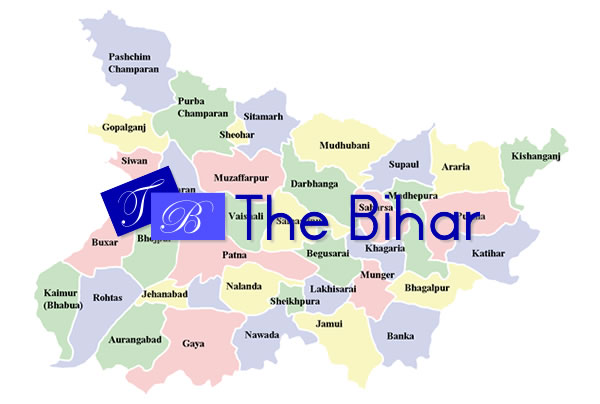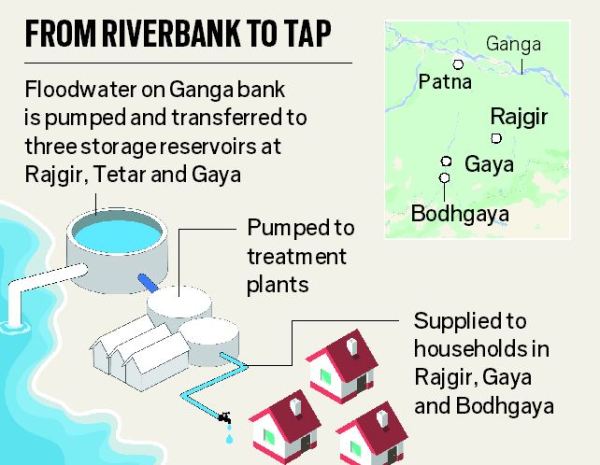Does the Appointment of Riot-Tainted DGP in Bihar Mark the End of Nitish’s Bond With Muslims?
7 min readNew Delhi: The appointment of the new director-general of police (DGP) of Bihar appears to be as much a political move as it is a routine administrative step. Ever since the Nitish Kumar government placed the riot-tainted, 1984-batch IPS officer Krishna Swaroop Dwivedi as the state’s police chief, the opposition has been up in arms.
Dwivedi, who was serving as DG (Training), took over from Pramod Kumar Thakur, who retired on February 28. For many, his appointment has been unexpected. The buzz was that since S.K. Sinha, a 1983 batch officer, is currently on central deputation and has not returned to Bihar for more than 20 years, his immediate junior Ravindra Kumar, serving as DG-cum-commandant general of civil defence, would be appointed as the police chief. But that did not happen.
During and after the riots, Dwivedi faced accusations of actively allowing rioting mobs to act with impunity in the 1989 Bhagalpur riots, which saw more than 1,000 people – 90% of whom were Muslims – killed and lakhs of properties owned by Muslims destroyed. In defending his appointment as DGP, the Bihar government on Wednesday said the high court and Supreme Court had eventually accepted Dwivedi’s plea that the adverse remarks against him be expunged.
A polarising figure
The unexpected appointment of Dwivedi inevitably had the opposition accusing the Nitish government of capitulating to BJP pressure. The Rashtriya Janata Dal (RJD) said that the Hindu nationalist party, which is a junior partner in the state government, may have had a role in getting a polarising figure like Dwivedi appointed.
RJD national spokesperson Manoj Jha said Dwivedi’s selection was an example of Nitish’s surrender to the RSS.
“This is a shock to many who have seen the barbaric Bhagalpur riots of 1989. Contemporary accounts bear ample witness to his partisan role. The appointment of such a person shall further erode the faith of people and communities on the margins. This seems to be a decision dictated by the likes and dislikes of the RSS,” Jha told The Telegraph.
BJP state president Nityanand Rai, hinting that the RJD harbours criminal elements, responded, “The RJD is afraid of him (Dwivedi) because he is considered a tough officer who will not tolerate people indulging in unlawful activities. Needless to say [we know] who such people are.”
Who is Dwivedi?
Dwivedi was the senior superintendent of police in Bhagalpu, when Hindu-Muslims riots broke out in October 1989 and continued until November. Several accounts, including a three-member inquiry commission’s report, faulted the role of the police under Dwivedi’s leadership and held several officials to be complicit with the rioting Hindu mob.
In their book, Splintered Justice: Living the Horror of Mass Communal Violence in Bhagalpur and Gujarat, Warisha Farashat and Prita Jha draw on the three-member commission of inquiry on Bhagalpur riots and say:
“Survivors have maintained that the then Senior Superintendent of Police (SSP) of Bhagalpur, KS Dwivedi, played a direct role in the riots. As the top officer in charge of law and order, he not only failed in his duty to stop the riots, but also issued instructions to his force to target the Muslims. This is not just an exaggerated claim made by the survivors, as the government’s Commission of Inquiry (CoI) in its final report also held Dwivedi “wholly responsible” for the carnage, saying he was “communally biased” against the Muslims. Indicting Dwivedi, the CoI noted:
‘We would hold Dwivedi, the then Senior Superintendent of Police, Bhagalpur, wholly responsible for whatever happened before October 24, 1989, on 24th and after 24th. His communal bias was fully demonstrated by his manner of arresting the Muslims and by not extending adequate help to protect them.’
The CoI report stated that Dwivedi’s communal bias was apparent from an infamous incident, sometime before the carnage. On the occasion of Moharram, he had delivered a hate speech, saying he would make Bhagalpur another Karbala, implying a massacre of its Muslim residents. At the time, the district magistrate had to seek Dwivedi’s apology for this statement.
The CoI report also named several other public officials for not taking adequate steps to control the anti-Muslim violence, either deliberately or due to incompetence. The carnage took place when the Congress was in power in Bihar and its veteran leader Satyendra Narayan Sinha was chief minister. When Prime Minister Rajiv Gandhi visited Bhagalpur during the riots, he ordered the immediate transfer of SSP Dwivedi. This triggered protests from the Vishwa Hindu Parishad (VHP) and other Hindu right-wing groups, forcing Rajiv to revoke his transfer order.
The vehement protests against Dwivedi’s transfer by Hindu fundamentalist groups should have come as proof of the officer’s complicity in the carnage. Instead, the government buckled under pressure and let him continue. Even today, survivors emphasise that had the transfer of Dwivedi not been revoked, many lives would have been saved.”
Before the commission of inquiry report came out, multiple fact-finding teams which visited riot-affected Bhagalpur had squarely put the blame on Dwivedi. The People’s Union for Democratic Rights (PUDR) noted,
“Police was seen moving with mobs, looting and destroying shops. They did not control the rioting mobs which flouted curfew orders with impunity. Worse still, the police itself violated curfew orders as they demonstrated on 26 October to protest against the transfer of the Superintendent of Police, K.S. Dwivedi. They were joined by BJP and VHP (Vishwa Hindu Parishad) leaders. The then prime minister Rajiv Gandhi who was touring the riot-struck district, acceded to their demand that the transfer orders be revoked. Many of the worst atrocities took place after this.”
Nitish Kumar’s U-turn
Ironically, it was Kumar who reignited the debate about injustices meted out to Muslims in Bhagalpur riots way back in 2005, when he first became chief minister.
Since 1995, when the commission of inquiry’s two reports came, the Lalu Prasad Yadav government, which was in power, did not quite act on the report’s findings. The apparent reason may have been that it would have required him to initiate proceedings against a large section of Yadav community members, who comprised a majority in the rioting mob. By 1995, he had successfully shifted the attention away from the Bhagalpur riots and had politically mobilised both Muslims and Yadavs in his support, while also foregrounding himself as a secular leader actively challenging the Hindutva forces.
However, since not much had happened on the justice front – many cases were dropped and many lingered on at courts – Dwivedi was shunted out to obscure positions. Soon after Kumar took over as the CM in 2005, he took two significant – and much publicised – decisions. One, he set up a new commission of inquiry under Justice N.N. Mishra to probe the Bhagalpur riots all over again. Two, he instituted the Bandyopadhyay commission to implement radical land reforms in the state, infamous for its exploitative feudal economy controlled by a few upper caste landlords.
It was clear that Kumar was trying to send out a message to the non-Yadav extremely backward classes (EBC), Muslims, and Dalits by projecting himself as a politician who prioritises justice over petty politics. The move was widely acclaimed even as it split a substantial section of Lalu Prasad’s OBC and Muslim support base.
However, while the Badyopadhyay commission was never discussed again, the Bhagalpur riots case came up only in 2013, when Kumar, who had now split with the BJP after Modi became its prime ministerial candidate, doubled the pension for 384 riot-affected families. Then, in 2015, after having performed rather poorly in the 2014 parliamentary elections, Kumar presented the Mishra commission report in the state assembly. Political observers believed that he may have hoped that reinventing himself as a secular leader would be a valuable addition to his image as a good governance icon ahead of the assembly elections in 2015. The strategy worked as the Janata Dal (United) and RJD fought the elections together to defeat the BJP, which had won a majority of Lok Sabha seats in Bihar only a year ago.
Now that Kumar is back with the BJP, it appears that he is taking a cue from the saffron party’s successful electoral formula of consolidating Hindus alone and ignoring the minorities. “That Muslims may not see Kumar as an independent leader anymore, after he broke ranks with the RJD and formed the government with the BJP, is one probable reason that may have provoked Kumar to take a decision like appointing Dwivedi,” said a senior journalist in Patna, who asked not to be named. He added that Kumar’s efforts to project himself as a governance icon may not work any more as many in Bihar, irrespective of caste and communities, also see him as “opportunistic”, especially after he abruptly switched sides.
By appointing Dwivedi as state police chief, Kumar has also signalled to the Hindutva forces that he is firmly on their side. This may enhance his political standing in the Sangh parivar, and the shift in his politics may reap him immediate benefits, but for a state which has perpetually been marred by law and order problems, the appointment of a polarising figure as police chief casts serious doubts on his administrative merits.
Courtesy: The Wire


